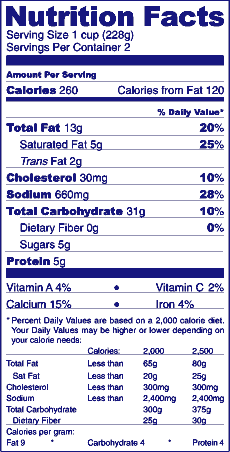Glycemic Goals & Lifestyle Modification
Assessing Glycemic Control
Patients and providers have tools and tests available to assess the effectiveness of the management plan: Self-monitoring blood glucose numbers and HgA1C testing.
Self-Monitoring of Blood Glucose
Frequency and timing of blood glucose monitoring depends on several factors. They are summarized in the table below:
| Frequency and Timing of Home Glucose Monitoring | |
|---|---|
When to test if you are NOT on insulin |
|
New diagnosis of diabetes; |
Test 3 times a day:
|
| If glucose is in target range: | Test 3 times a day EVERY 3rd Day |
When to test if you are taking insulin |
|
| When taking basal and bolus (meal associated) insulin: | Test 4 times a day
|
| If taking basal insulin only: | Test fasting glucose daily and perform other pre- and post-meal tests intermittently |
In all diabetic patients taking or not taking insulin, you should test: |
|
|
|
All patients should have their self-monitored blood glucose skills reassessed periodically, especially if the glucometer numbers do not correspond to HgA1C levels.
HgbA1C Testing
The Hemoglobin A1C test (also known as “A1C”) measures a patient’s average glycemic levels over the past two to three months. Hemoglobin A1C in people without diabetes is between 4 – 6%, which means that 4 – 6% of a non-diabetic person’s hemoglobin has nonenzymatically attached glucose. In a chronically uncontrolled diabetic patient, the percentage of their hemoglobin that has nonenzymatically attached glucose is much higher. The test is a way of assessing glycemic control at initial diagnosis and ongoing continuity of care.
How often should a Hemoglobin A1C be drawn? (Choose the one best answer.)
The answer is C. An A1C can be drawn quarterly in patients whose therapy has just changed or who are not meeting glycemic control. In patients who are at glycemic control, it can be drawn twice a year.
An A1C “point of care” test is also now available that allows rapid results during a physician visit if needed. Lowering A1C levels in diabetics reduces neuropathic and microvascular complications.
A1C testing is limited by any condition that affects erythrocyte turnover such as hemolytic diseases, recent blood loss, in people with hemoglobin variants.
Glycemic Target Goals
The American Diabetes Association has specific recommendations to target goals for A1C and self-monitored blood glucose levels:
- Hemoglobin A1C for diabetic patients in general <7%.
- Hemoglobin A1C for an individual diabetic patient as close to normal (<6%) as possible without significant hypoglycemia.
- Less stringent A1C may be considered in young children or older adults with limited life expectancies.
- Premeal capillary glucose of 90 – 130 mg/dL.
- Postmeal (1 – 2 hours) capillary glucose of <180 mg/dL.
Different medical societies may have different target goals:
| Glycemic Target Goals | |||
|---|---|---|---|
American Association of Clinical Endocrinologist |
International Diabetes Center |
American Diabetes Association |
|
HgbA1C |
<6.5% |
<7% |
<7% |
Premeal Glucose |
<110 mg.dL |
70-140 mg/dL |
90-130 mg/dL |
Postmeal Glucose |
<140 mg/dL |
<160 mg/dL |
<180 mg/dL |
Medical Nutrition Therapy and Exercise
Medical nutrition therapy and physical activity are key components of optimizing glycemic control and lowering the risk of diabetic complications.
Medical Nutrition Therapy (MNT)
All people with diabetes should be offered medical nutrition therapy. The ADA recommends that intensive nutrition counseling be done in junction with a registered dietician trained in diabetes. Some studies have shown that persons receiving no education from a nutritionist have little change in their HgA1C. This counseling can be reinforced by the physician, nurses, and other members of the interdisciplinary team.
MNT can reduce A1C in newly diagnosed type 2 diabetes by 2% and by 1% in those with type 2 diabetes for 4 or more years. The overall goals of MNT are:
- To prevent and manage chronic complications
- To improve general overall health through food choices and physical activity
- To achieve and maintain optimal metabolic outcomes
- To address individual needs
MNT focuses on weight management, carbohydrate counting, and reduced dietary fat.
Weight Management
There is a strong link between developing type 2 diabetes and being in an obese or overweight status. It can also make diabetes difficult to manage. Obesity is also an independent risk factor in hyperlipidemia, hypertension, and cardiovascular disease. Weight loss can prevent diabetes in those with “pre-diabetes”, lower cardiovascular disease risk, decrease abdominal fat, and improve glucose control. This makes moderate weight loss a vital strategy in both patients at risk for diabetes and in those who have diabetes. Weight loss occurs in most through a reduction in energy intake and by increasing activity.
ADA Weight Management Recommendations |
|
Carbohydrate Counting
Carbohydrate counting can limit hyperglycemia, can improve weight loss, reduce insulin resistance, and prevent complications of diabetes. The amount of grams of carbohydrates and type of carbohydrates in food will influence blood glucose levels. The total amount of carbohydrates can be monitored by carbohydrate counting or exchange plans.
The main food groups are meats, fats, and carbohydrates.
Carbohydrates come from a variety of sources including starches, fruits, diary foods, and desserts. The general idea of carbohydrate counting involves using the convention that 15 grams of carbohydrates = 1 “carbohydrate choice”.
The International Diabetes Center recommends the following food plan:
|
For Weight Loss |
To Maintain Weight |
For Very Active People |
Women |
2-3 choices/meal |
3-4 choices/meal |
4-5 choices/meal |
Men |
3-4 choices/meal |
4-5 choices/meal |
4-6 choices/meal |
The advent of food labels allows people to see the estimated carbohydrates they are consuming.

Source: National Agricultural
Library, Agricultural Research
Service, USDA, 2003
Diabetic patients and those using insulin should consult with registered nutritionist before starting carbohydrate counting or exchange programs. The ADA and other societies have many reading resources on calorie counting.

In addition, low-carbohydrate diets (ex. Atkins, etc.) are not recommended for diabetic patients because restricting carbohydrates below 130 grams / day in diabetics may be below brain, nervous system, and other metabolic requirements.
Dietary Fat
The National Cholesterol Education Program recommends that total fat be 25 – 35% of total calories and <7% of saturated fat. Saturated and trans fatty acids are the principle dietary factors of LDL cholesterol, which is a major factor in cardiovascular disease.
Other Nutrition Considerations
- Fiber-rich foods, as in the general population, are highly recommended (fruits, vegetables, whole-grain products, fiber-rich cereals, legumes).
- Reduced-calorie sugar substitutes approved by the FDA appear to be safe in diabetic patients.
- Benefits of chromium and antioxidant supplementation in diabetics have not been demonstrated and are not recommended by the FDA.
- Diabetic adults should be encouraged to avoid alcohol, but in those who choose drink the daily intake should be limited to one drink or less for a day for women and two drinks a day or less for men. A drink is equal to 12 oz. beer, 5 oz. wine, or 1.5 oz. distilled spirits.
The ADA has a fun and useful “Virtual Grocery Store” available to patients with access to the web:
http://vgs.diabetes.org/homepage.jsp
Exercise
Another important method of achieving optimal glucose control is through physical activity.
Physical activity has which effects on patients with diabetes mellitus?
The answer is E. Physical activity will reduce the risk of cardiovascular disease, reduce insulin resistance, and will assist in weight reduction and management.
Aerobic Activity
Intensity of aerobic activity intensity is defined as:
- Moderate intensity aerobic exercise which achieves 50 – 70% of the maximum heart rate.
- Vigorous aerobic exercise which achieves >70% of the maximum heart rate.
| Aerobic Activity Recommendations in General Diabetic Patients | |
|---|---|
Moderate Intensity |
At least 150 min / week distributed over 3 days / week with no more than 2 consecutive days without activity. |
AND / OR |
|
| Vigorous Intensity | At least 90 min / week distributed over 3 days / week with no more than 2 consecutive days without activity. |
Resistance Exercise
Resistance exercise targeting all major muscle groups is recommended for all people with type 2 diabetes at least 3 times a week unless there is a contraindication. Patients should progress to 3 sets of 8 – 10 repetitions at a weight that can not be lifted more than 8 – 10 times. Resistance training improves insulin sensitivity just as well as aerobic activity.
Cardiac Stress Testing Before Exercise
Stress testing with an EKG should be considered prior to beginning aerobic activity that exceeds the demands of everyday living (more than a brisk walk) in a patient whose 10 year risk of a coronary event is likely ≥10%.